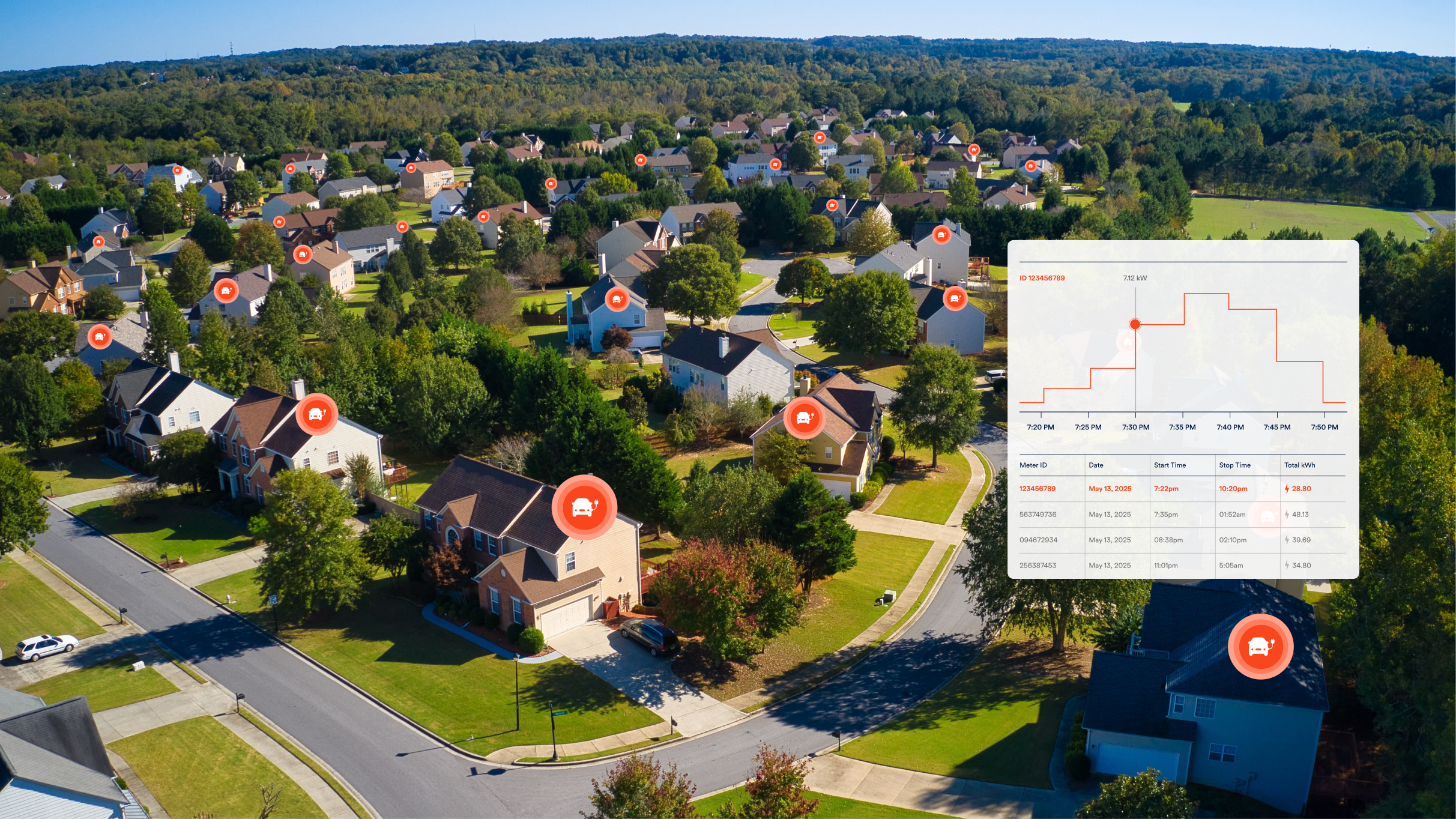The rapid rise of electric vehicles is reshaping the way we think about the grid—from both sides of the meter. As utilities work to meet ambitious climate mandates while keeping systems resilient and affordable, EVs are emerging as both a challenge and an opportunity.
According to the US Department of Energy, around 80% of EV charging happens at home. That’s good news because unlike most home energy loads, EV charging is highly flexible. With the right tools, utilities can turn this flexibility into real-world value: for the grid, for the environment, and for customers.
But it all starts with visibility. That’s where Sense EV Analytics comes in.
Meet Sense EV Analytics: Smarter EV Intelligence From the Grid Edge
EV Analytics leverages Sense’s distributed edge intelligence to detect and analyze home EV charging regardless of vehicle make or charger type. By applying AI and machine learning to high-resolution waveform data, EV Analytics gives utilities unprecedented clarity into when, where, and how much EVs are charging.
And that clarity enables action.
Sense identifies Level 1 and Level 2 charging events with minute-by-minute start/stop timestamps and 5-minute kW load data. This information feeds directly into key utility operations—from managed charging and distribution planning to load forecasting and customer engagement.
- Detect Charging at the Grid Edge
Leverage meter-embedded AI that analyzes high-resolution waveform data—eliminating the blind spots and delays of cloud-only or 15-minute interval data approaches. - Lower Program Costs and Expand Access
Recruit and enroll more customers into managed charging programs with new options for EVs using Level 1 chargers. One solution, broad coverage, lower acquisition costs. - Support All EVs and Chargers
Deliver EV insights regardless of make, model, or charger. Sense’s waveform-based detection is vehicle and charger agnostic—removing the enrollment friction created by telematics or proprietary hardware. - Adapt to the Fast-Changing Grid
As new EVs are added to the grid every day, Sense keeps pace offering continuous detection and insights to help you adapt your planning and operations in real time. - Build a Flexible, Scalable Foundation
Support multiple meter communication protocols (Cellular, Mesh, WiFi) and integrate seamlessly with utility platforms. Sense enables a software-first strategy that’s ready to scale with your AMI 2.0 rollout. - Unlock Dispatchable Load
EV charging is flexible and Sense helps you tap into that flexibility. Shift load to off-peak hours with real-time visibility that enables smarter demand response and grid reliability strategies.
Why Grid-Edge Matters
Today, most utilities rely on a patchwork of EV data sources—some delayed, some disconnected from actual meter locations, and many with significant data gaps. Further, most software approaches rely on cloud models that can’t keep up with the real-time grid. That makes planning difficult, and limits the success of managed charging programs.
EV Analytics changes that. By detecting when an EV is added to a home, utilities can immediately determine how that load will impact local distribution assets. And with identifying and measuring charge events directly at the meter, Sense delivers timely, accurate, and location-specific insights at scale—no extra hardware, no messy integrations.
Giving EV Drivers Power
Accurately identifying where EVs are from the edge also enables utilities to engage their owners. EV charging can double household energy demand, creating grid stress if unmanaged. While time-of-use (TOU) rates aim to shift charging to off-peak times, results are mixed—often due to limited customer engagement. Sense EV Analytics together with the Sense Home app can provide real-time alerts and visibility into when rates change and what’s using power.
But rates alone aren’t enough. Sense research shows that TOU periods often don’t align with the grid’s cleanest energy. Nor are they aligned with seasonal peaks, like AC-driven load increases during the hottest part of the day. Smarter charging needs to factor in renewable generation, real-time usage, and overall carbon intensity. This kind of optimization could cut emissions by up to 43%.
To make it work, we need home-level intelligence and consumer-friendly tools. With software embedded in smart meters and an easy-to-use app, Sense is uniquely positioned to enable flexible, low-carbon EV charging for a more resilient grid.
Shape EV Demand Before It Shapes Your Grid
EV sales are surging. According to the International Energy Agency (IEA), EVs grew to 10% of new U.S. car sales in 2024. By 2030, that number is forecasted to hit between 20% and 50%. That increase could add between 100TWh and 185TWh to our total electricity demand, representing between 2.5% to 4.6% of our total consumption.
That’s great for utilities under pressure to meet climate goals. But without the right strategy, it could mean up to an increase in peak energy demand—at a time when many grids are already under strain from weather events and rising consumption.
The good news: EV charging is flexible. With tools like Sense EV Analytics, utilities can shape demand—reducing peak load, improving grid reliability, and helping customers charge at times when energy is cleaner, cheaper, and more plentiful.
With Sense EV Analytics, utilities get:
- Reliable detection of all EV’s on the residential network to know when a new EV is added
- Daily EV charging data for improved forecasting
- Accurate charge detection to enroll more customers in managed charging
- Seamless integration with utility systems and customer apps
In a world where every kilowatt-hour matters, Sense provides the clarity to act and the tools to drive meaningful change.
Let’s unlock EVs as part of our cleaner, more resilient future—starting at the meter.
